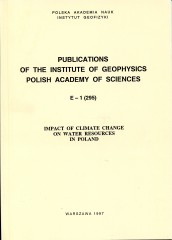- A - Physics of the Earth's Interior
- B - Seismology
-
C - Geomagnetism
C-119, C-118, C-117, C-116, C-115, C-114, C-113, C-112, C-111, C-110, C-109, C-108, C-107, C-106, C-105, C-104, C-103, C-102, C-101, C-100, C-99, C-98, C-97, C-96, C-95, C-94, C-93, C-92, C-91, C-90, C-89, C-88, C-87, C-86, C-85, C-84, C-83, C-82, C-81, C-80, C-79, C-78, C-77, C-76, C-75, C-74, C-73, C-72, C-71, C-70, C-69, C-68, C-67, C-66, C-65, C-64, C-63, C-62, C-61, C-60, C-59, C-58, C-57, C-56, C-55, C-54, C-53, C-52, C-51, C-50, C-49, C-48, C-47, C-46, C-45, C-44, C-43, C-42, C-41, C-40, C-39, C-38, C-37, C-36, C-35, C-33, C-32, C-31, C-30, C-29, C-28, C-27, C-26, C-25, C-24, C-23, C-22, C-21, C-20, C-19, C-18, C-17, C-16, C-15, C-14, C-13, C-12, C-11, C-10, C-9, C-8, C-7, C-6, C-5, C-4, C-3, C-2, C-1
-
D - Physics of the Atmosphere
D-79, D-78, D-77, D-76, D-75, D-74, D-73, D-72, D-71, D-70, D-69, D-68, D-67, D-66, D-65, D-64, D-63, D-62, D-61, D-60, D-59, D-58, D-57, D-56, D-55, D-54, D-53, D-52, D-51, D-50, D-49, D-48, D-47, D-46, D-44, D-45, D-43, D-42, D-41, D-40, D-39, D-38, D-37, D-35, D-34, D-33, D-32, D-31, D-30, D-28, D-27, D-26, D-25, D-24, D-23, D-22, D-21, D-20, D-19, D-18, D-17, D-16, D-15, D-14, D-13, D-12, D-11, D-10, D-9, D-8, D-7, D-6, D-5, D-4, D-3, D-2, D-1
- E - Hydrology
- P - Polar Research
- M - Miscellanea
-
Online First
Impact of Climate Change on Water Resources in Poland
Volume: 295
Series: E-1
With 1,500 m3 of annual availability of per capita water supply, unevenly distributed in time and space, Poland is scarce in water in a large part of the country. A comparison of water availability in Poland and some European countries is shown in Fig. 1. Variations of country's runoff range between 34.4 km3 in 1952 and 79.5 km3 in 1981 (Fig. 2). Due to interannual and intra-annual variability (Fig. 3) of hydrologic processes, the reliable water resources, available by 95% of time, are equal to about 22 km3. Due to environmental constraints only 30% to 40% of these resources may be effectively used be agriculture, industry, or population for residential needs. Despite of natural water scarcity and some improvements in last years, Poland's economy is still water intensive. For example, the efficiency of water use in industry is, at present, three to four times lower in Poland than in most of West European countries.
CONTENTS
1. Introduction, ...3
2. Climate scenarios, ...8
3. Changes in runoff and other water balance components, ...11
4. Impact of climate change on water management, ...18
4.1 Introduction, ...18
4.2 Assessment of future water demands, ...20
4.3 Upper Vistula water supply system, ...21
4.4 Jeziorsko reservoir system, ...25
4.5 Two-level optimization technique, ...27
4.6 Comparison by simulation, ...28
4.7 Optimization results and conclusions, ...30
4.8 Remarks on possible adaptation options, ...36
5. Impact of climate change on Poland´s aquatic ecosystems, ...39
5.1 Climate change and water quality management, ...39
5.2 Impact of climate change on temperature and evaporation of shallow lakes, ...41
5.3 Thermal regime of a stratified Masurian lake, ...44
6. Final remarks, ...48
References, ...50


